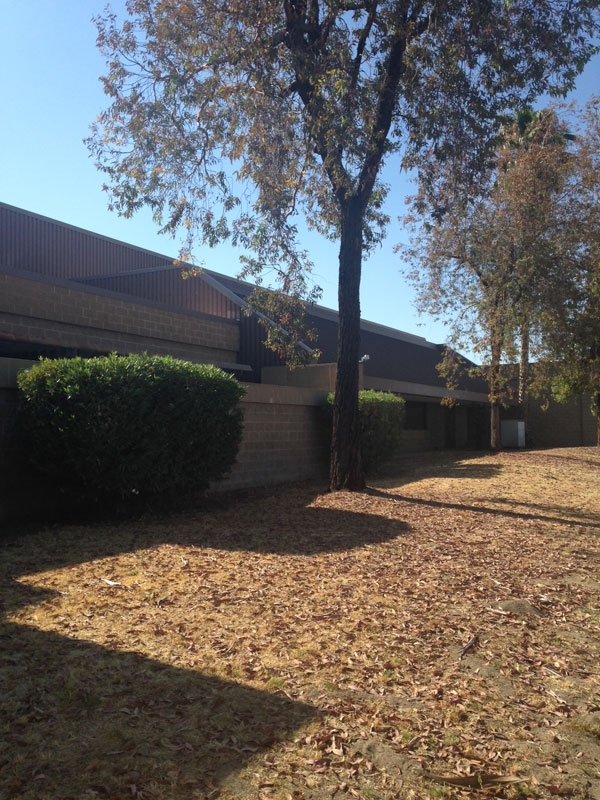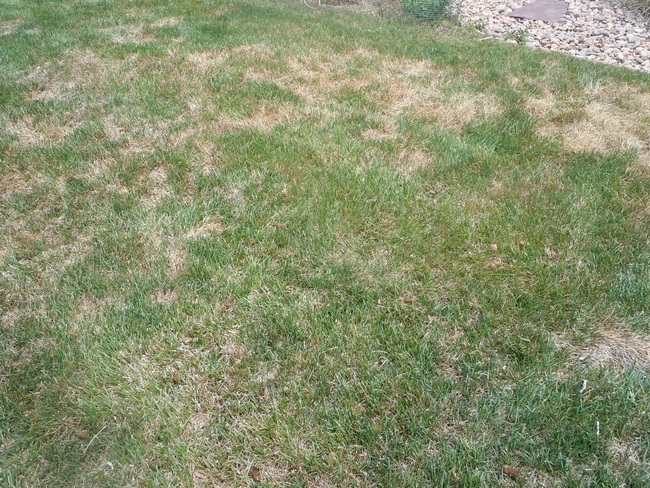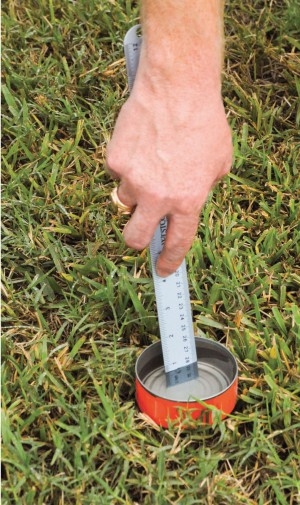The drought needs not be a death sentence for lawns
While a golden brown lawn is seen as a badge of honor to some residents of drought-stricken California, in fact, they are doing more harm to the environment than good, says UC Agriculture and Natural Resources turf expert Jim Baird.
“People have gone from one extreme to another,” said Baird, UC ANR Cooperative Extension turf specialist based at UC Riverside. “When we weren't in a water crisis, people were watering seven days a week, 365 days a year. Now, people feel like they're doing the right thing by putting no water on their lawn at all.”
Baird developed a keen appreciation for turf as a teenager playing golf and later working at a municipal golf course in Pueblo, Colo. “I found my passion,” he said. “The rest is history.” He earned a bachelor's degree in horticulture, a master's degree in agronomy, and a doctorate in botany, all the while focused on turf.
Baird's research and the lawn in front of his own Riverside home show that turf can be kept alive, and even attractive, with a minimal amount of water. And maintaining lawns rather than letting them die or replacing the grass with synthetic turf, concrete or so-called drought-tolerant plants offers important ecological services.
As anyone who has enjoyed a picnic in the park can attest, grass is cool. In contrast, the surface of artificial turf has been found to reach 180 degrees on a hot day. It often must be cooled with water before it can be used for sports. Bare soil, concrete and asphalt get significantly warmer and hold heat longer than a grassy lawn, which functions like a natural evaporative cooler.
“The more we let our grass lawns die or go away, the hotter it's going to get,” Baird said.
Grass, like all plants, absorbs carbon from the atmosphere and sequesters it in the soil, a vitally important quality as the country searches for ways to slow global warming. The production of plastics to make artificial turf has the opposite impact. And after a decade or so, artificial turf will wind up in the landfill, where it could take hundreds of years to decompose.
Grass provides food and habitat for birds and small mammals, with the abundant insects, spiders and worms living among the blades and below the surface. Unlike concrete, asphalt and hard-packed earth, properly maintained turfgrass is porous, allowing water to infiltrate when it does rain, rather than sheeting off the surface and into storm drains. Soil erosion and dust are also reduced or eliminated with grass lawns.
With all these benefits, Baird is dismayed to see the abundance of unnecessarily dead and dying lawns in California. The loss of green growing grass is an ecological loss in the short term, and difficult and expensive to revive once the drought ends.
“A dead lawn could come back as nothing but weeds,” Baird said.
He and his UC ANR colleagues wrote an eight-page publication on managing turfgrass under drought conditions that will help homeowners and lawn managers keep their lawns alive with minimal water.
The publication outlines the concept of deficit irrigation, a system in which the grass has just enough water to maintain an adequate appearance, but with less growth. Irrigation can be cut back to two times per week. If the blades spring back after being walked on, the lawn doesn't need more water.
“The grass may not be as lush and green as usual, but you can still have a lawn where kids and pets can play and families can enjoy outdoor barbecues,” Baird said.
Additional water savings can be achieved by carefully managing the sprinkler system. Areas shaded by trees or a house need less water than grass with day-long sun exposure. Irrigating before dawn reduces evaporation, leaving more water for the plant roots to absorb. Using sprinklers when there is less wind will help prevent overspray onto sidewalks and the street.
“We suggest homeowners test their sprinklers by placing cans around the lawn and running the sprinklers to see if water is being applied uniformly,” Baird said. “This also provides the opportunity for them to see if there are any broken sprinklers or leaks that need to be repaired.”
Mowing practices also impact the lawn's water use. The grass should be maintained at the tallest height recommended for the species being grown to encourage development of deep roots. Leaving the grass clippings on the lawn with a mulching mower will reduce evaporation from the soil surface.
If new lawns are being considered, water use can be cut by selecting a turfgrass species that uses less water. For example, Baird is studying kikuyugrass in plots at UC Riverside Turfgrass Research Facility. A native of East Africa, kikuyugrass is well adapted to warm, temperate climates in coastal areas and inland valleys of Southern and Central California. Other drought-tolerant grasses being studied at the facility are Bermudagrass and seashore paspalum.
A pdf version of Managing turfgrasses during drought, which includes grass species recommendations, is available for free download from the UC ANR online publication catalog.
For professional landscapers and home gardeners interested in detailed turfgrass research information, UC ANR is hosting a Turfgrass and Landscape Research Field Day Sept. 17. Registration is $90 before Aug. 28, $100 on or after Aug. 28 and $120 onsite. The complete agenda, registration form and previous research reports can be found on the field day website.
An initiative to improve California water quality, quantity and security is part of the UC Division of Agriculture and Natural Resources Strategic Vision 2025.
Author: Jeannette Warnert
Comments:
They can provide advice on reviving your dead lawn.
http://www.canogaparkquilt.com/2015/06/new-drought-friendly-landscaping.html





Posted by MCS Eacock on July 14, 2015 at 10:06 AM